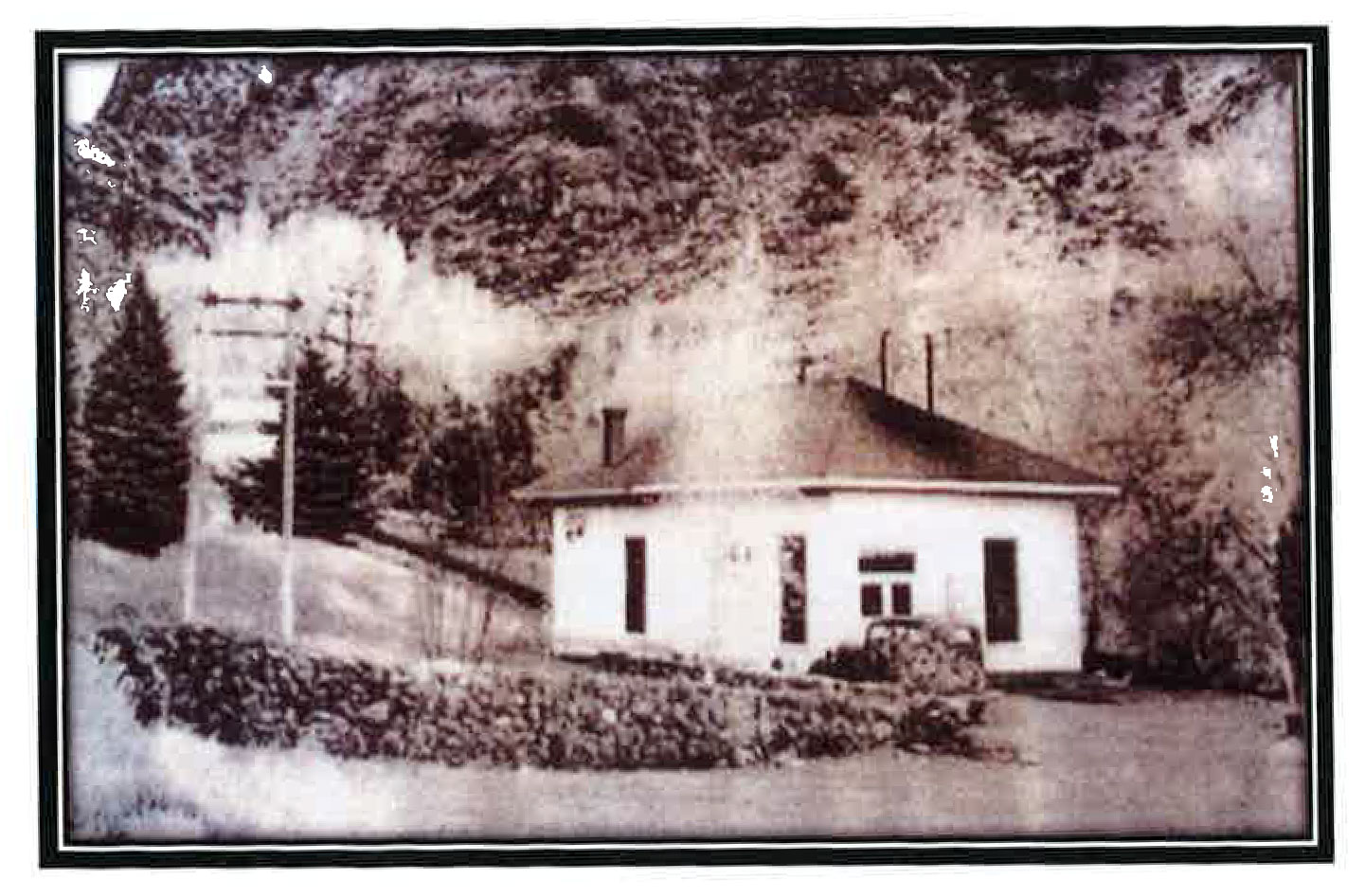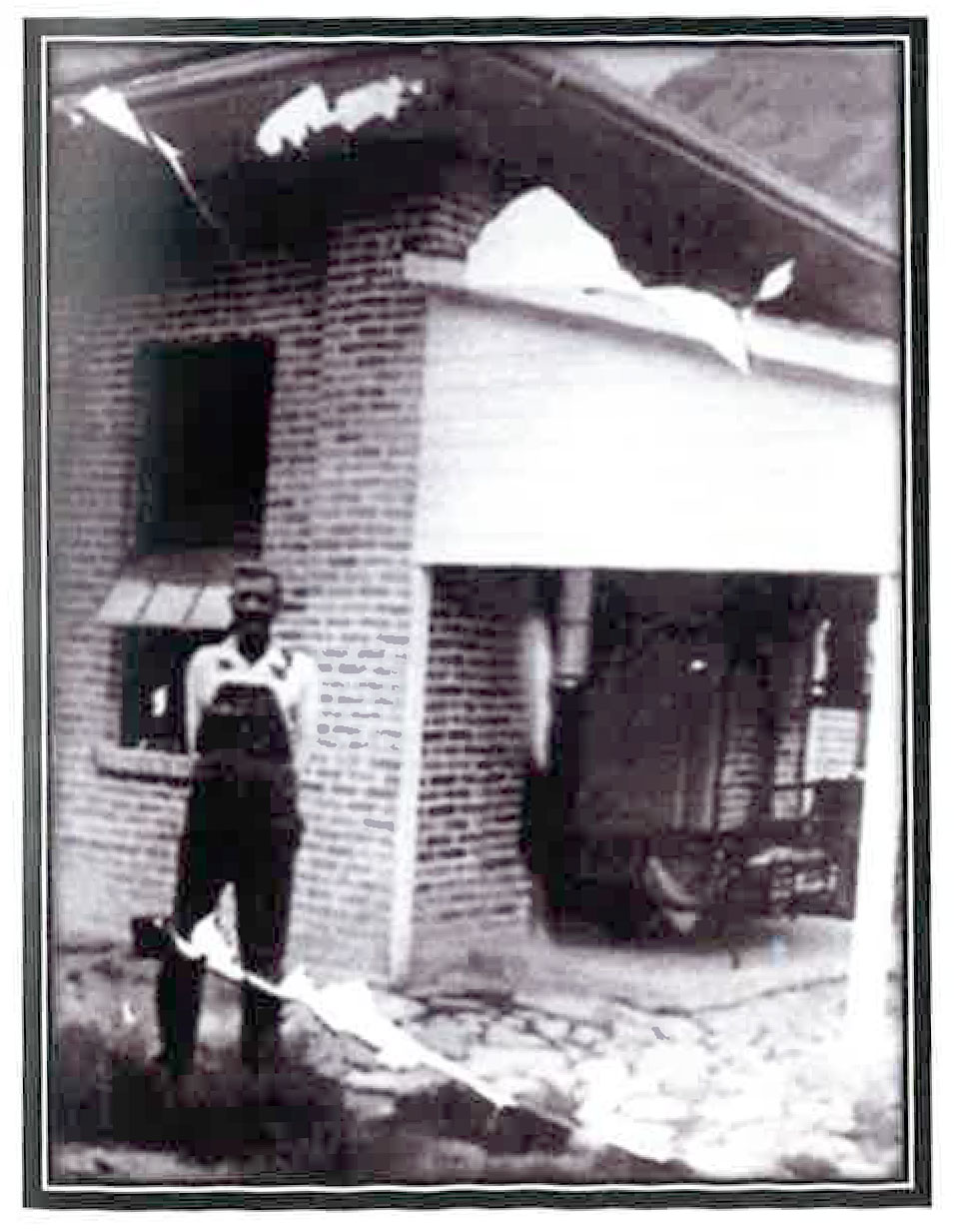Historical Record | Monroe City 1965-2014
POWER IN MONROE
ln 1907, two young men James Jeppsen and John Manson, started plans to bring power to the town. An old grist mill bad operated successfully by water power, up the canyon. They decided the grist mill location would be a good place for an electrical power plant. They acquired the mill pond and the water turbine in the bottom part of the mill. This is where they installed their generator, and strung wire lines into town.
At that time, there were only a few globes in homes and business locations. It was basic, but it was still a real luxury.
Most of the time there was only power for evening times due to stream flows and storage pond capacity.
The power company was a private partnership and they handled all of their own business in the sale of power for the community.
In 1915, the town purchased the holdings of the two pa1tners and began operating the first city power system. They continued for two years until a fire broke out. The Richfield Reaper reported that on February 24, 1917 an early morning fire broke out at the grist mill at about 5 :00 a.m. The building and generating equipment were destroyed.
The citizens went back to using candles and kerosene lamps for a short time. The Telluride Power Company was supplying power to a sugar mill in the area, and arrangements were made to extend a line to Monroe City. The city officials went back to the site and put up a small plant until they could build a new, permanent building. The lower plant was completed in 1926.
As the need for more power increased, another plant was built in the head of the narrows in the main canyon. The water from First Left-Hand Fork was used to generate power after the project was completed in 1938. This generator station has been remolded over the years, but the outside rock work remains.
Now fast-forward to the 1980's. Other fires had burned some of the other plants. The city decided to extend the main penstock and build another plant down lower, out of the main canyon.
As told by Kent Parsons: This facility continues to operate today and is one of our main sources of power. About 9 or 1O years ago the city's drinking water was determined to be under potential surface influence. We turned part of the spring out of the system but it didn't help us enough. The city borrowed three million dollars and had a water treatment plant built. About six years ago, the city put the turned out portion of the spring back into their system, as we were treating all our water.
Beginning at that time, it was decided that it would be feasible to use culinary water to generate more capacity.
The city engineer crunched the numbers and after some debate, and borrowing money, it was determined to take the best option and build it with city funds. It was a big step, but we were confident in our decision.
The city filed an application for a conduit exemption with the FERC, which we eventually received. We started consulting with the other agencies and going through the hoops. We received water right appropriation approval. All these items take a while. We eventually received our construction permit for the Cold Springs power plant.
It was then time to bid out the project. Bids came in better than we had anticipated, so we jumped right into construction. Some things went better than others. We completed the Cold Springs Hydro Project and started up in January 2013.
Old Lower Power Plant - 1929


First dependable power plant for Monroe
Lower Monroe Power Plant - 1929
Charles Rudolph Naser - 1st Operator
